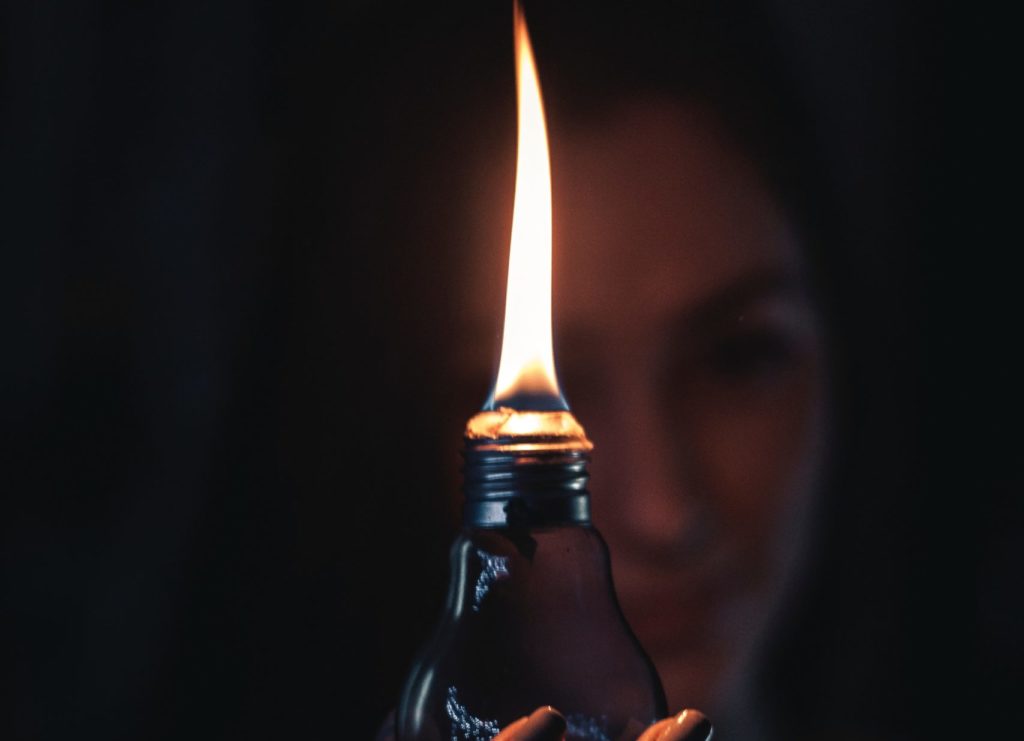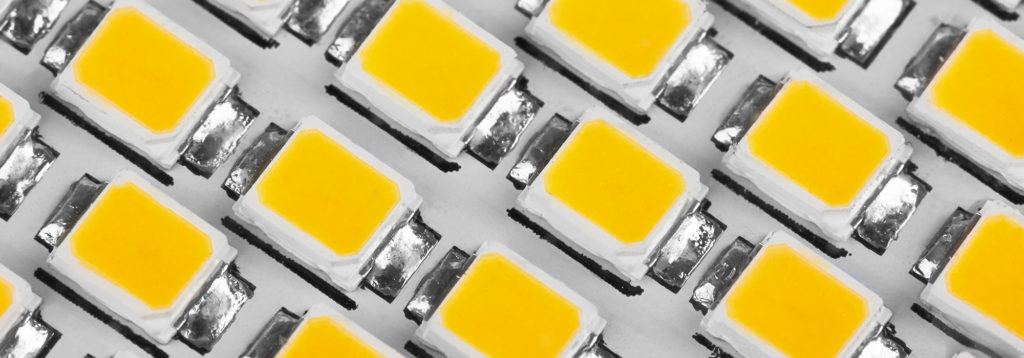Do LED Lights Get Hot? Myths Debunked September 11, 2018 – Posted in: Lighting Information, General Info

Table of Contents
There is a lot of people who swear by LED bulbs. Customers have been singing the praises of LED lighting and mostly moved on from the use of halogen and incandescent lights. We also encourage those who haven’t to make the switch. LEDs have proven to be superior in almost every way.
However, like any other type of hype, a lot of misconceptions are also likely to follow. When it comes to LED it’s best to learn everything about the lighting before you make the switch. Most people ask whether or no LED bulbs get hot. The answer to this question is both yes and no.
So, Do LED Lights Get Hot or Not?
LED lights do get hot, it’s physically impossible for them not to as they produce energy. To understand the full extent of this question you need first to know how LEDs emit heat. One of the most popular misconceptions is that LED bulbs don’t produce heat, in which case this would be physically impossible.
How Do LEDs Emit Heat?
Heat is created in LED lights when the crystal parts of the diode are affected by minor deformities. Since not all the electricity going into the diode is turn into lights, some of it becomes exhumed as heat.

You may notice that the lamp is cool when you touch it, but the heat is usually accumulated on the inside, and that’s why most people think that LED bulbs don’t get hot. That is because the outer shell of an LED bulb is just used to diffuse the direct light that’s being produced, it’s mostly hollow. Most of the heat is expelled through the back part of the bulb where more metal contact is made.
There is also different types of lights that have heat sinks on the back to dissipate the heat. LEDs that are used in the manufacturing or warehouses, such as high bay ufo lighting, can easily convert about 80% of electricity going in, meaning that the 80% is converted to light because they use highly efficient diodes.
Which is primarily the reason why LEDs emit heat. So, do LED lights get hot? Yes!
Do LED lights get hot? Yes!

For the light emission and assimilation of energy to be more efficient, the quality of the diodes and components used need to be better as well. Before you make the switch, make sure that you look for a brand that uses quality build materials only. Many reasons why lights fail is because of the constant heat being emitted improperly.
You also need to consider that heat production is also a form of light absorption. When you light a grow lamp for example, you may have noticed that the plant or objects near it also tend to be hot, because they absorb the heat being emitted by the light.
According to the law of conversation and energy, energy essentially changes its form but isn’t lost, so the light being emitted is either transferred into energy or turned into heat. Traditional lights produce heat through IR (Infrared Radiation) which tend to heat the bulb around it which makes the bulb too hot to touch. LEDs don’t generate heat through IR which means that they don’t heat the bulb around them.
This is the reason why LEDs are used in stores, restaurants, and homes. They last longer since they produce less heat. This also makes them more cost-effective and safer than halogen and incandescent lights.

You can also place LED lamps near plants because they generate less IR and therefore very little heat gets to the plants. LEDs also use fewer watts which also means that less heat is generated. You should also consider how you position the bulb.
If you position the LED bulb straight up or straight down, it will generally run cooler than when placed sideways. It more effective because the hot conversion air tends to flow past the bulb length.
If you place the bulb sideways, you need to make sure that you consider the operating temperatures are within normal ranges. The fact that LED lights don’t emit so much heat compared to traditional lights makes them more energy efficient.
Only 5% of light emitted by LED bulbs is converted to heat while 95% is converted into light. While it’s the reverse for other types of light, 95% becomes converted to heat, while only 5% is converted to light.
They also draw to draw less power compared to halogen, incandescent, and fluorescent lights. 36-watt LED can give the same light as an 84-watt fluorescent. This is why LED is preferred in greenhouses because the lesser the energy used, demand from power plants is reduced and the greenhouse gas emissions are decreased.
Why LED’s Are Safer & Produce Less Heat
LED lights produce heat, but the heat generate less than older lighting such as halogen, you may not even detect it for small LED’s and you most certainly won’t experience any discomfort from it. Even though the bulb doesn’t get hot, some powerful LED lighting has heat sinks that will.

The heat sink is designed to draw the heat out of the light and then transfer it into the air which is why the heatsink is the hottest part of the bulb because it makes sure that the supply of power is cool.
Therefore, the amount of heat produced by LED bulbs is held internally which is why even when you touch it, it remains cool. Other types of bulbs emit heat and loses a great deal of power to heat. LED, compared to other lights, are approximately 20% cooler compared to other bulbs. Halogen and incandescent lights give off heat in high amounts which ups the risks of burns, fires, and other issues. LED lights, on the other hand, dissipate heat.
LED are obviously, in this context, better than other types of light because they don’t get hot in any dangerous sense. However, it is always wise to handle the bulbs with caution just to make sure that there is optimal safety from fire hazards, electrocution, burns and more. Since they are energy efficient, you should also consider making a switch if you haven’t done that yet.
Frequently Asked Questions
Do led lights get hot enough to start a fire?
LED lights can theoretically get hot enough to start a fire, however this is highly unlikely, I wouldn’t bet on it. LED lights are specifically designed to run on low voltage (12-24V) and current, so there is very little heat produced. Many LED lights are constructed with metal heatsinks that dissipate any heat away from the device itself, preventing them from becoming hot enough to cause a fire. Generally, for an LED light to become hot enough to start a fire it would have to be malfunctioning; this could happen as a result of overloading the system or providing it with too much power.
Do LED Lights Get Hotter Than Fluorescent Lights?
LED lights emit less heat than traditional fluorescent lighting. This not only conserves energy, but also ensures a safer environment, as LED lamps emit significantly less energy radiation. In stark contrast to fluorescent lighting, LED lights generate only a fraction of heat, with a coefficient roughly 85% lower. Consequently, the temperature of LED lights is cooler, making it a great alternative to conventional light sources that emit more heat.
How Hot Do LED Bulbs Get?
A typical LED bulbs can reach temperatures of around 150°F (65.5°C) near the base where the heat is diffused and around 95°F (35°C) on the outside of the diffuser.
I have been the project manager for Modern.Place since early 2016, spending three of those years working overseas on the manufacturing & procurement side of the LED lighting industry. Constantly learning and passing on knowledge to others while excited for what the lighting industry will involve into next.



2 Comments
Karl Blair Dickinson October 05, 2020 - 07:14
Doesn’t the LED ballast create heat as well?
Vitaliy Vinogradov October 08, 2020 - 12:45 – In reply to: Karl Blair Dickinson
It creates heat but with proper equipment it will create minimal heat due to good ventilation.